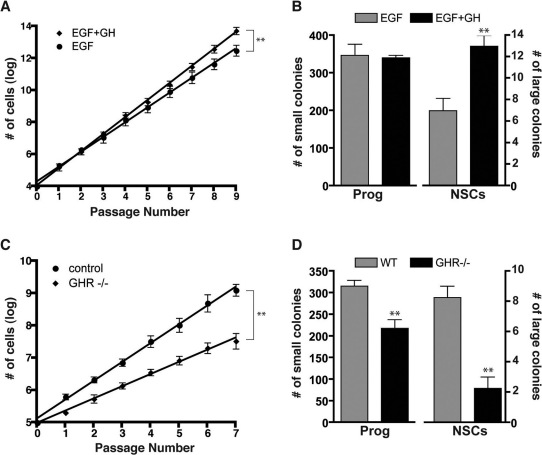Figure 3. Addition of exogenous GH increases NSC numbers, while deletion of GHR reduces NSC frequency in long-term neurosphere cultures.
(A) Linear regression analysis of the total number of cells generated after each passage in adult SVZ-derived long-term neurosphere cultures grown in EGF (20 ng/ml) or EGF supplemented with GH (EGF+GH; 100 ng/ml) reveals that the addition of GH results in a significantly increased rate of expansion (i.e. slope) as compared to neurospheres cultured in EGF alone (p = 0.008; n = 3, Student's t-test). (B) When transferred to the N-CFCA, neurosphere-derived cells passaged in EGF+GH generated significantly more NSC-derived colonies as compared to those passaged in EGF alone (13.0±1.0 vs. 7±1.2, n = 3, p = 0.011, Student's t-test), without affecting the overall number of progenitor cell-derived (<2.0 mm) colonies. (C) In contrast, linear regression analysis of the number of cells generated after each passage in long-term neurosphere cultures generated from the PVZ demonstrates a significantly reduced rate of expansion in adult GHR−/− (p<0.0001, n = 4) as compared to control. (D) When transferred to the N-CFCA, neurosphere-derived cells from GHR−/− mice generated significantly fewer large colonies, as compared to those derived from controls (2.25±0.75 vs. 8.25±0.75, n = 4, p = 0.0013, Student's t-test). The number of progenitor cell-derived colonies (218.3±20.3 vs. 315.8±13.7, n = 4, p = 0.0072) were also significantly reduced in GHR−/− mice as compared to littermate controls. *p<0.05, **p<0.01.

